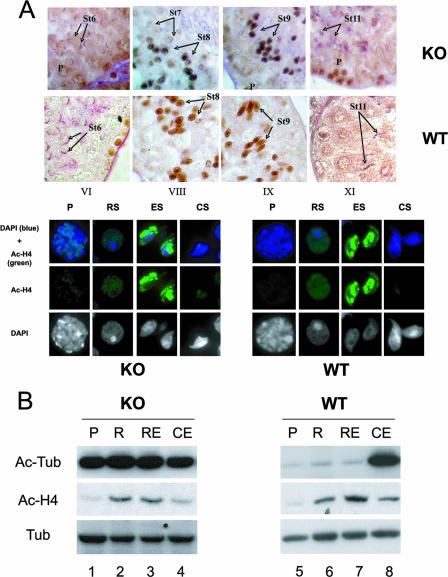FIG. 4.
Inactivation of HDAC6 induces tubulin hyperacetylation during spermatogenesis but does not alter histone H4 acetylation. (A) The patterns of histone H4 acetylation during spermatogenesis are similar in HDAC6-deficient (knockout [KO]) and wild-type (WT) mice. (Top) Detection of acetylated H4 by immunohistochemistry on paraffin-embedded testis sections. Pachytene cells (P) and spermatid stages 6 (St6) to 11 (St11) are indicated. (Bottom) Detection of acetylated H4 by immunofluorescence on paraformaldehyde-fixed germinal cells. Abbreviations: P, pachytene cells; RS, round spermatids; ES, elongating spermatids; CS, condensing spermatids; DAPI, 4′,6′-diamidino-2-phenylindole; Ac-H4, acetylated histone H4. (B) Tubulin acetylation in HDAC6-deficient and wild-type spermatogenic cells. Spermatogenic cells were dissociated and fractionated, and the corresponding extracts were analyzed by immunoblotting to monitor tubulin acetylation (Ac-Tub), histone H4 acetylation (Ac-H4), and α-tubulin (Tub). The fractions analyzed were enriched in the following types of spermatogenic cells: pachytene spermatocytes (P), round spermatids (R), round and elongating spermatids (RE), and elongating and condensing spermatids (CE).

